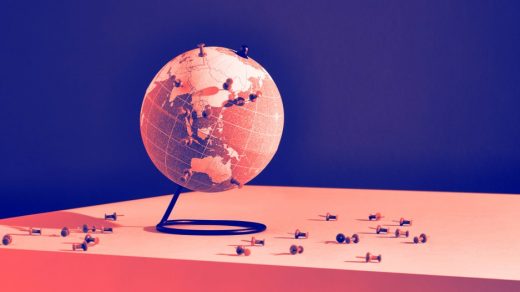Most DEI programs are missing out on large part of the population
Yet, well into 2022, there remains an American-centricity to this function, even at global companies. This makes sense when you consider that San Francisco Bay is the fastest-growing area for such positions, and the company with the most DEI professionals (45) is New York-headquartered IBM.
But as DEI work becomes mainstream worldwide, employees abroad are beginning to question the local relevance of policies clearly drafted with America in mind. “By not localizing your programs, you’re effectively telling people in other places that their experience is not worthy of your attention – that’s exclusion,” says Sage Franch, Toronto-based founder of Crescendo, a learning and development solutions provider. Today, global DEI programs cannot, and should not, focus on just the 4.5% of the world’s population that lives within U.S. borders.
So how can businesses take their programs worldwide, especially when the DEI function is still often under-resourced? Experts say it’s a matter of starting small, and carefully translating a company’s global values locally.
Don’t assume—ask
“When we don’t ask questions, or listen with an open mind, we forget about all the experiences we don’t identify with,” says London-based Sheree Atcheson, Group Vice President of D&I at Valtech, which operates in 20 countries. She recommends using listening tools such as surveys, which can be easily tailored to multiple regions, to gather consistent but localized data on employee experiences and backgrounds. Atcheson stresses that the language used must be reflective of the culture the employee is based in. “Many ethnicities, for example, have different names in parts of Europe as compared to North America. It’s important to use local terminology so as to not be exclusionary,” she says.
Ground policies in the local context
“When developing global programs, you need to remove your American lens and ask: Who is struggling in other places, and why?,” says Atcheson. Using this approach, she launched a leadership training program at Valtech that currently sponsors 46 employees from regionally under-represented backgrounds in six countries including India, Switzerland and Argentina. “When we researched these societies, we found that the most under-represented groups were often women or non-natives, so we focused on elevating employees from those communities.”
Tailor your communications
After last year’s spike in anti-Asian hate crimes in the U.S., Franch saw companies sending out messages denouncing the events to employees in places like Japan. But racism looks, and is experienced, very differently there and American racial events don’t reflect regional nuances. Her advice: don’t assume an issue is going to be important to everyone. “If you must raise something globally, do it in a way that takes the listener on a journey relevant to them. For example, you may use Black Lives Matter as a starting point to talk about police brutality in other countries,” she says.
De-center America in existing policies
Khetarpal recalls how a past employer rejected his application for a position because he didn’t have U.S. experience. Yet, he says, teammates from America and other Western countries were routinely allowed to move to Asia for locally-focused roles without requiring Asian experience. “I’m glad that colleagues from the West were offered that mobility, but it also felt like Asian employees’ growth was valued less than theirs,” he says.
Diya Khanna, founder of DEI firm Global IDEA discusses bereavement leave as another example. “In some non-Western cultures, the body of a loved one who has passed is not even treated till the third day, yet many American companies only offer 1-2 days to grieve because that is standard for cultures they are familiar with.”
Similarly, Khanna recommends being conscious of the many definitions of family: in global majority cultures, “family” includes aunts, uncles, cousins and grandparents, which is not the case for dominant cultures – important insight while creating inclusive family-focused policies.
Think beyond geography
To Khanna, globalizing goes beyond thinking about physical location. “It’s not just about drafting strategies for, say, the Nigerian office, but also ensuring that your U.S. policies cover Nigerian employees living in America. The experiences of those two communities will differ – to be truly global, we must be identity-based in addition to place-based.”
While globalizing a DEI program is a noble goal, most employees know how hard it is to achieve with limited resources. Khetarpal offers VaynerMedia as a model of leading with authenticity: the company’s APAC (Asia-Pacific) program is still nascent, yet no one assumes the U.S.-led initiatives are applicable to all regions. His advice: “Don’t use the word ‘global’ if it’s not accurate; train regional leadership to become more inclusive in day-to-day tasks such as hiring; and take small but meaningful actions to support communities in crisis. That’s enough as a starting point.”
Puneet Sandhu is a London-based writer, marketer and DEI executive.
(35)



